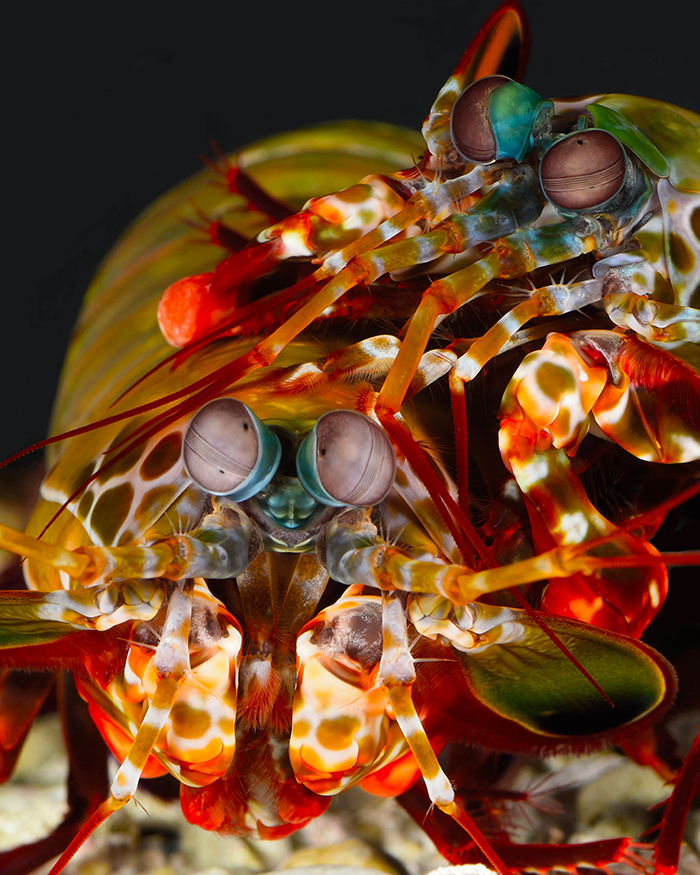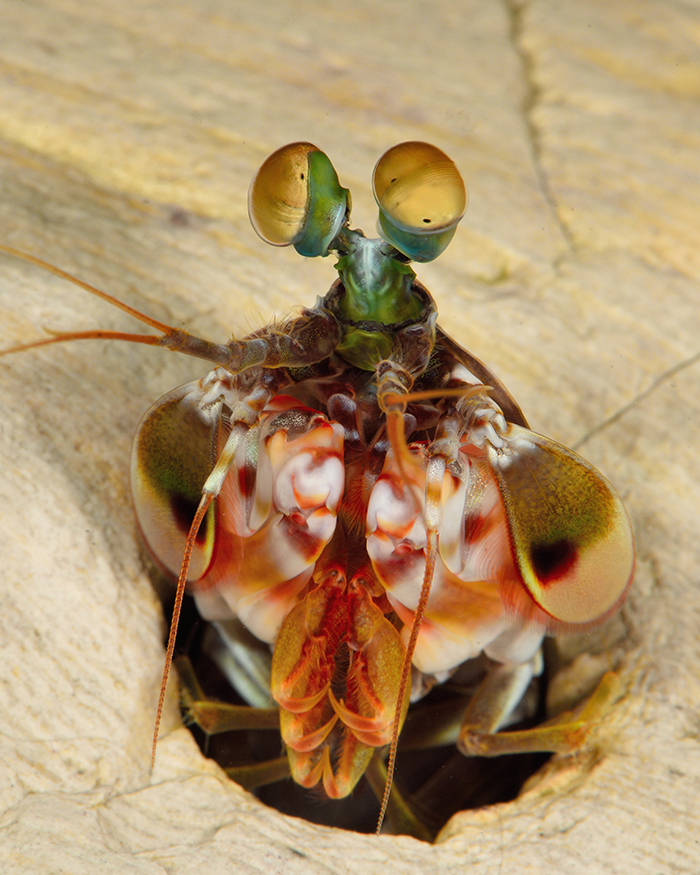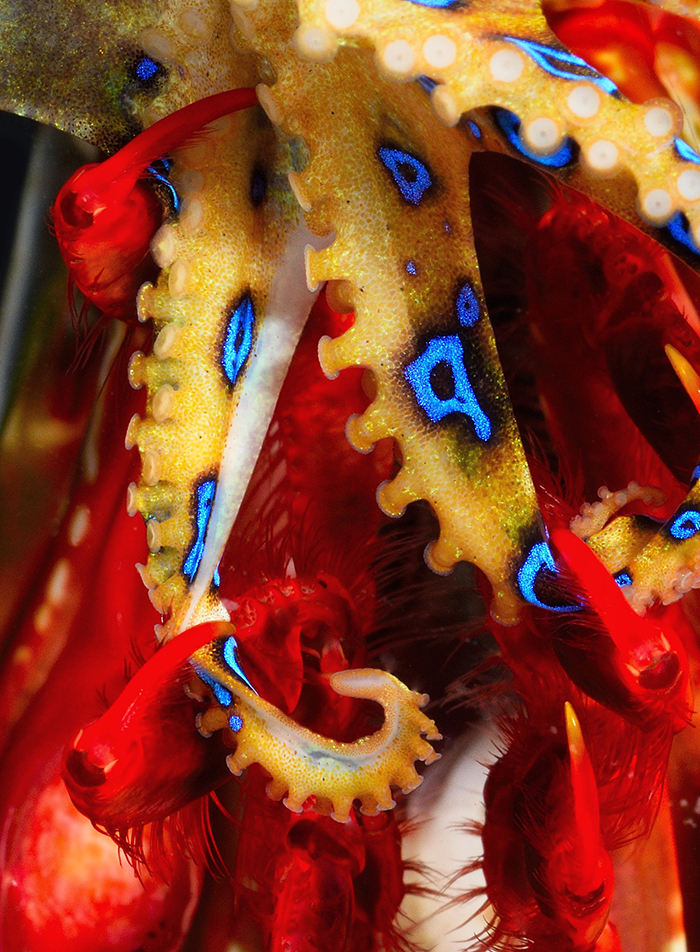QBI researchers have advanced our understanding of how animals see and use colour, and how their colour vision has evolved.
Colour has an important role in reproduction and prey–predator interactions, although it serves diverse functions in various animals, said Professor Justin Marshall, co-author of a study undertaken with international colleagues.
“Colouration serves as an important source of information about animals, and the way in which colours are perceived differs between species,” Professor Marshall said.
“I work with mantis shrimp, but also other oceanic animals because their colour vision is very different to ours. Mantis shrimp have four times as many colour receptors as we humans do. We have three – red, green, and blue – and they have 12.”
Animals use UV light for specific purposes
The research (The biology of color), published in the journal Science, provides insight into how a variety of animals use colours invisible to the human eye, such as ultraviolet light, for species-specific purposes.
“Some animals use fluorescence or ‘enhanced’ colours,” Professor Marshall said.
“We humans have reinvented this – and we use fluorescence in everyday objects, such as highlighter pens, or in washing power to achieve that ‘whiter-than-white’ look. Humans have realised that we can use chemicals to boost colours – light is taken in by the chemical and re-emitted, so it literally glows.”
Understanding animal colour vision can help humans
Professor Marshall said an understanding of colours could be useful in everyday life.
“The challenge is to better understand how animals use their colour vision and their colours for survival,” he said.
The new research follows earlier work co-authored by Professor Marshall in Philosophical Transactions of the Royal Society B (edited by Tim Caro, Mary Caswell Stoddard and Devi Stuart-Fox) following a workshop funded by Wissenschaftskolleg zu Berlin, which explored how the role of colours in animals’ lives varied greatly across species, based on factors such as environment, physical factors (e.g. toxicity), and whether an animal is either predator or prey.






